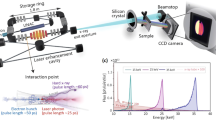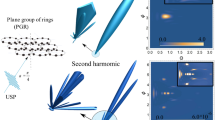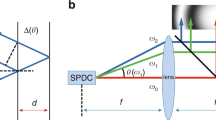Abstract
IN the course of an investigation with the purpose of getting more exact determinations of the wavelengths of the X-ray spectra, we have carried out a comparison of the lattice-constants of the two crystals, calcite and gypsum. In order to find the best possible value of this fundamental relation, we used a series of different spectral-lines with wave-lengths varying from 0.7 up to 5.2 Å.U. The measurements of the relation are given graphically in Fig. 1, where the values of are plotted against the wavelengths. As seen from the graph there are two marked discontinuities in the run of the curve. It is also seen that these two abrupt variations coincide with the wave-lengths of the absorption-edges of calcium and sulphur.
This is a preview of subscription content, access via your institution
Access options
Subscribe to this journal
Receive 51 print issues and online access
$199.00 per year
only $3.90 per issue
Buy this article
- Purchase on Springer Link
- Instant access to full article PDF
Prices may be subject to local taxes which are calculated during checkout
Similar content being viewed by others
Author information
Authors and Affiliations
Rights and permissions
About this article
Cite this article
HJALMAR, E., SIEGBAHN, M. Anomalous Dispersion in the Field of X-Rays. Nature 115, 85–86 (1925). https://doi.org/10.1038/115085c0
Issue Date:
DOI: https://doi.org/10.1038/115085c0
Comments
By submitting a comment you agree to abide by our Terms and Community Guidelines. If you find something abusive or that does not comply with our terms or guidelines please flag it as inappropriate.



